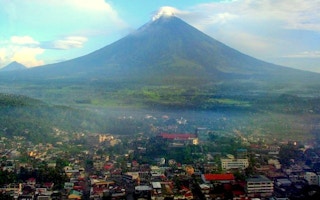Researchers now have a new explanation for the so-called slowdown in global warming in this century. They blame it on not very dramatic, small-scale volcanic eruptions.
This is a new twist in a puzzling story. In 1991, a catastrophic eruption of Mount Pinatubo in the Philippines hurled 20 million tonnes of sulphur dioxide into the stratosphere − a delivery of aerosols huge enough to block incoming sunlight and actually cool the planet for a couple of years. The assumption since then has been that big volcanic eruptions have enough heft to influence climate.
But in two recent papers, researchers have proposed another hypothesis, and then identified the evidence that a greater number of quite modest eruptions could have the same effect.
Mechanisms at work
To demonstrate such a thing, scientists need to pinpoint the mechanisms at work. In November, David Ridley, an atmospheric scientist at the Massachusetts Institute of Technology, and colleagues focused on the intersection of two atmospheric layers – the atmosphere and troposphere.
They used a mix of ground, air and space-based technology to observe the aerosols in the lower stratosphere, and then they played with a climate model. The conclusions were straightforward: volcanoes could have caused a cooling of between 0.05°C and 0.12°C since 2000.
And the latest study, by a team led by Benjamin Santer, an atmospheric scientist at the Lawrence Livermore National Laboratory in California, has shown that the “signals” of eruptions in the late 20th and early 21st centuries can be positively identified in the atmospheric temperature, moisture and reflected radiation at the top of the atmosphere.
This signal, they report in Geophysical Research Letters, doesn’t explain all the hiatus or slowdown. But it makes a significant contribution.
Uptick in activity
Very roughly, there are 1,500 active volcanoes on the planet and, during 1990, there were 53 recorded eruptions. In 2010, there were 83; in 2013, there were a record 84. So it looks as if an uptick in geothermal activity could have made a difference.
But the climate machine is not a simple thing, and the argument is likely to go on. Other researchers have proposed that the missing heat is concealed in the ocean depths, or that achange in the trade winds may be a factor, or that climate scientists may have misread the signals because the extremes in the last 15 years have been hotter, even if the average has not increased much.
So, all along, the discussion has been not just about what might have been missed, but also about precisely what should or could be measured. And, in any case, words such as “pause”, “hiatus” and even “slowdown” add to the confusion.
Early in December, meteorologists declared 2014 on course to be the warmest year ever. It may not prove so – the calculations will take a few more weeks – but even if it isn’t, 14 of the 15 warmest years ever recorded have all occurred in the 21st century.

















